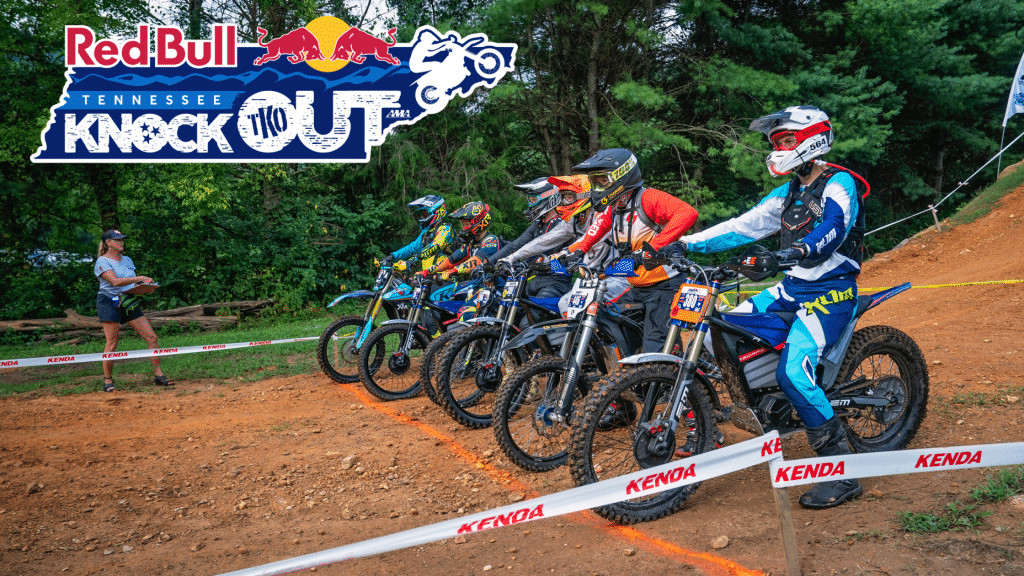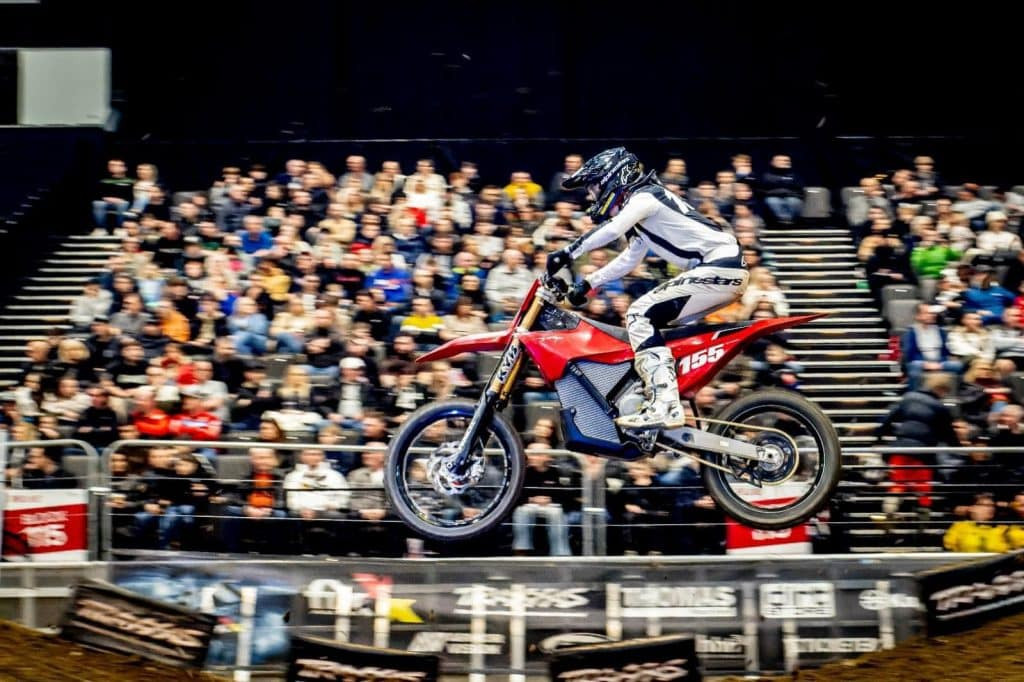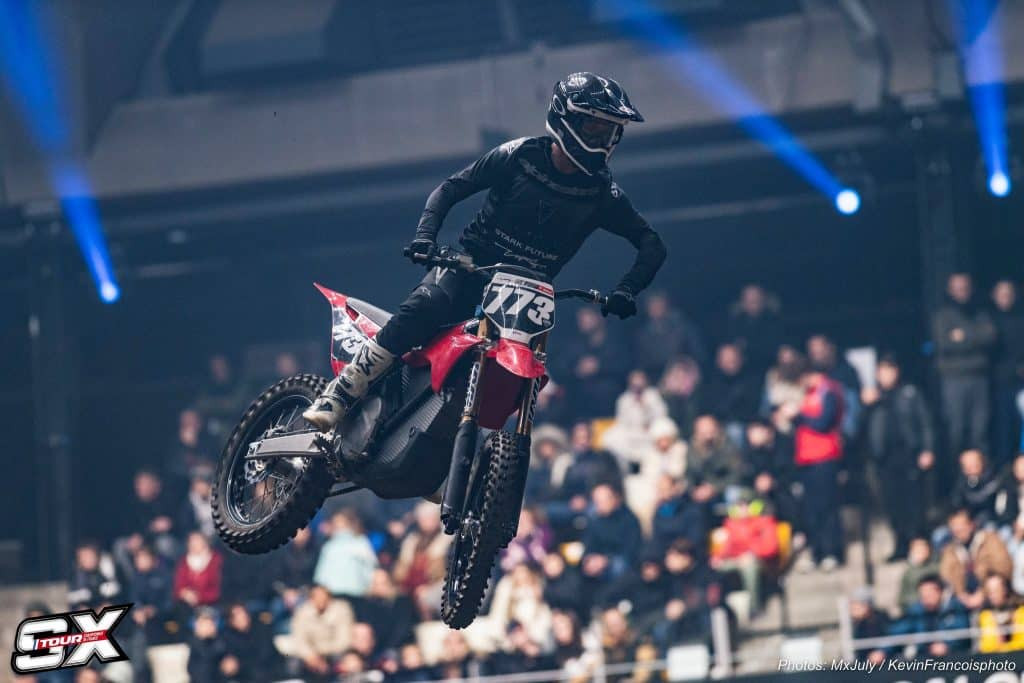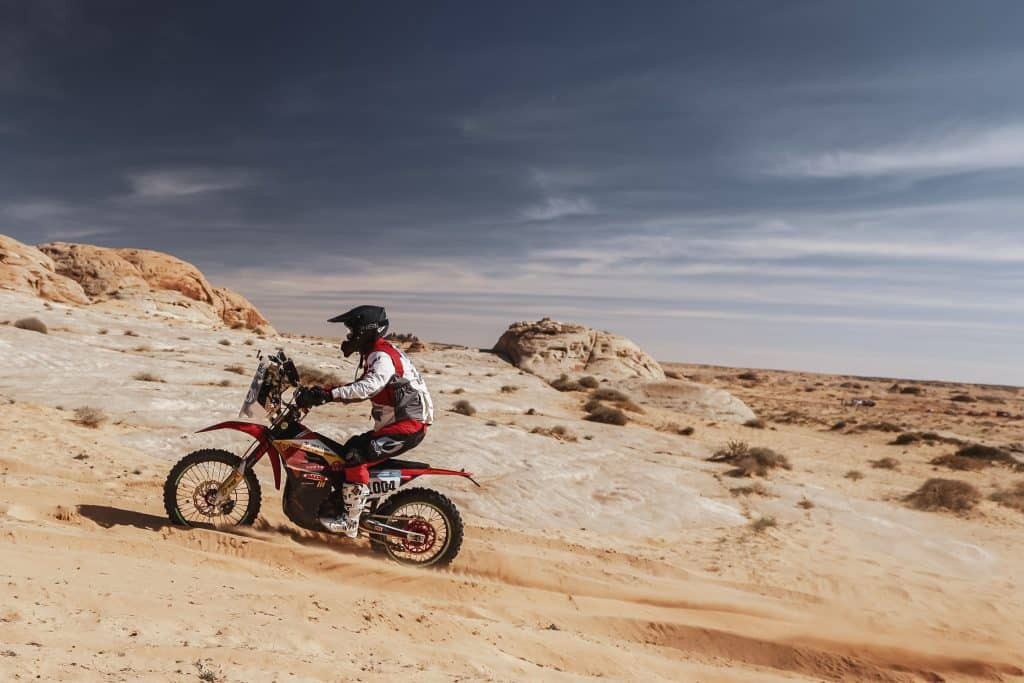Are you searching for “Dirt Bike Races Near Me” and wondering if you can participate with your electric dirt bike? It’s a question on the minds of many as electric dirt bikes gain popularity and performance. Just a short time ago, the rules surrounding electric dirt bike racing were unclear, often decided on a race-by-race basis. However, with the arrival of high-performance machines like the Stark Varg, things are changing rapidly. These bikes have proven to be incredibly fast, even outperforming traditional 450cc motocross bikes, forcing racing organizations to reconsider their classifications and rules.
Initially, the novelty of electric dirt bikes led to a relaxed approach, but their impressive performance has accelerated the need for clear regulations. This shift is partly due to the established motorcycle manufacturers, who have historically dominated off-road racing and supported major sanctioning bodies like the Fédération Internationale de Motorcyclisme (FIM) and the American Motorcyclist Association (AMA). With no major OEM currently offering a full-size electric dirt bike, there’s been a degree of caution in allowing new electric machines to compete directly with their established technology.

The integration of electric dirt bikes into racing raises numerous questions. How should they be classified? What safety protocols are necessary? Can they compete against internal combustion engine (ICE) bikes? What are the considerations for race duration, weight limits, and power measurement (newtonmeters, kilowatts, or horsepower)? These are complex issues that are gradually being addressed as the world of electric motorcycling evolves.
Echoes of the Past: The Four-Stroke Revolution
To understand the current situation, it’s helpful to look back at a previous revolution in dirt bike technology. In the late 1990s, the Environmental Protection Agency (EPA) in the United States introduced legislation to reduce emissions from off-road motorcycles. Faced with potential restrictions on sales, manufacturers turned to four-stroke engines. Initially considered less competitive than two-strokes, four-stroke technology was revitalized, offering cleaner and more efficient performance.
To encourage adoption, racing organizations like the AMA and FIM adjusted class rules, allowing four-strokes to have twice the engine displacement of two-strokes in the same class (e.g., 250cc four-strokes could compete with 125cc two-strokes). Over time, four-strokes surpassed two-strokes in power and rideability, leading to the discontinuation of two-stroke dirt bikes by many major manufacturers. This transition, driven by emissions regulations, ultimately benefited riders with improved machines, manufacturers with increased sales, and the EPA with its environmental goals.
However, this shift also brought a downside: noise pollution. Four-stroke race bikes are significantly louder than their two-stroke predecessors, leading to noise limits at races and even track closures. This noise factor adds another layer of complexity to the acceptance of electric dirt bikes, which offer a much quieter alternative. The technology we see in racing often trickles down to recreational riding, making these developments relevant to all dirt bike enthusiasts, racers or not.
Why the Hesitation?
So, if electric dirt bikes offer performance and reduced noise, why isn’t the transition smoother? The primary driver for the four-stroke revolution was EPA pressure regarding emissions. Currently, there isn’t the same regulatory pressure to push for low or zero-emission off-road vehicles. For major OEMs to invest heavily in a significant shift like electric technology, a strong incentive, whether regulatory or consumer-driven, is often necessary. Despite the lack of regulatory push, consumer demand for competitive and enjoyable vehicles, which electric dirt bikes certainly promise to be, may ultimately drive the change.
Where Can You Race Your Electric Dirt Bike Today?
Despite the evolving regulations, there are already opportunities to race your electric dirt bike. Here’s a look at where you can find “dirt bike races near me” that welcome electric machines:
AMA Motocross:
For local AMA-sanctioned motocross tracks, the rules are becoming more accommodating. While professional AMA Motocross is not yet open to full-size electric bikes, local tracks and AMA referees have the autonomy to decide whether to allow eMotos under their supplementary rules. The 2024 AMA Racing Rulebook states that electric motorcycle eligibility is generally determined by event-specific rules, and when allowed, eMotos typically compete in open, non-displacement classes. As electric bike performance becomes more prevalent, the creation of dedicated Electric-Only classes seems increasingly likely. However, for major amateur events like the Loretta Lynn’s AMA Amateur National Motocross Championships, full-size eMotos are currently not permitted, with the exception of the 50cc-sized Micro-E class which includes KTM/Husky/GasGas electric bikes and the Cobra CX-5E.
GNCC (Grand National Cross Country):
Great news for cross-country enthusiasts! The Grand National Cross Country series (GNCC) has updated its rules to include full-size eMotos. They are now eligible to compete in the new Open E amateur class. While professional GNCC races can be grueling three-hour events, the amateur races are two hours, which aligns well with the current battery range of most electric dirt bikes.
US Sprint Enduro:
The US Sprint Enduro series was a pioneer in embracing electric dirt bikes, being the first AMA series to offer both Pro Electric and Open Electric classes. This regional championship is gaining popularity, and the relatively low number of electric bike entries in early races presents a unique opportunity for electric bike racers to potentially achieve podium finishes in the pro class.
Red Bull Tennessee Knockout (TKO):
 ECR eMoto 2023 Red Bull TKO Tennessee Knockout
ECR eMoto 2023 Red Bull TKO Tennessee Knockout
The Red Bull Tennessee Knockout, known for its challenging off-road terrain, made history as the first AMA event to officially feature an electric-specific class. ECR’s Tucker Neary played a key role in this development, highlighting the growing acceptance of electric bikes in even the most demanding races.
Non-AMA Series:
J-Day Off Road:
For those in the Northeast, the J-Day Off Road series offers a popular blend of sprint hare-scramble and motocross racing. Being independent of the AMA, J-Day has the flexibility to set its own rules, and currently, there are no restrictions on full-size eMotos. Local racer Robby Marshall has even competed successfully on a Stark in this series. The 30-minute motos are well-suited to the battery life of current electric dirt bikes. J-Day has also partnered with Amped Bikes to introduce small-size electric bike racing, welcoming Sur Ron and Talaria bikes to the track. A similar series in the Mid-Atlantic region, TORR (Temple Off Road Racing), follows similar rules and also accommodates eMotos.
Global Electric Dirt Bike Racing:
The electric dirt bike racing scene is expanding globally, with rule changes happening frequently.
United Kingdom:

The Arenacross British Championship not only permits eMotos but also witnessed history as Stark became the first electric motorcycle company to win a major championship title. Jack Brunell secured both the individual and manufacturer championships for Stark, demonstrating the competitive edge of electric bikes.
Spain:
Despite initial setbacks with the FIM SuperEnduro World Championship, Spain has embraced electric bikes. The Spanish Hard Enduro Championship allowed the Stark Varg to compete, where Taddy Blazuziak achieved a strong finish, even with a battery swap during the race.
France:

The French Supercross series also welcomed Stark to its SX1 category. Thomas Do showcased the bike’s performance, consistently placing near the top five, although rule limitations prevented him from earning championship points.
Dakar Rally:
Chinese manufacturer Arctic Leopard entered the Dakar Rally with its 880 E-XE electric bike in the new Mission 1000 category for electric and low-emission vehicles. They emerged as the top electric motorcycle brand in this demanding event, proving the durability and potential of electric technology in extreme conditions.

Australia:
Motorcycling Australia has updated its 2024 rulebook to include electric motorcycles in all motocross classes. Approved electric bikes can compete in MX2 (48hp setting) and MX1 (60hp setting) classes, suggesting we may soon see electric bikes competing in the Australian MX Nationals.
FIM E-Xplorer World Cup:
The FIM E-Xplorer World Cup is a dedicated electric-only global series, blending elements of MX and endurocross. Honda HRC has joined the series, demonstrating the growing manufacturer interest in electric racing. While primarily a professional team series, “Wild Card” entries are available for those willing to participate.
Be an Advocate for Electric Dirt Bike Racing!
If you’re looking for “dirt bike races near me” and want to compete on your electric dirt bike in AMA events, reach out to your local AMA representatives and tracks. Express your interest in racing your electric machine and inquire about local supplemental rules. Globally, the key is to organize and work with local federations, using examples of inclusive rule changes like those in Australia, to advocate for the inclusion of electric dirt bikes in more racing events.
The landscape of electric dirt bike racing is constantly evolving, with new opportunities emerging regularly. Stay informed about local and national series, and don’t hesitate to be a voice for electric dirt bike racing in your community. If you’ve raced your eMoto, share your experiences and help grow the electric dirt bike racing movement!
